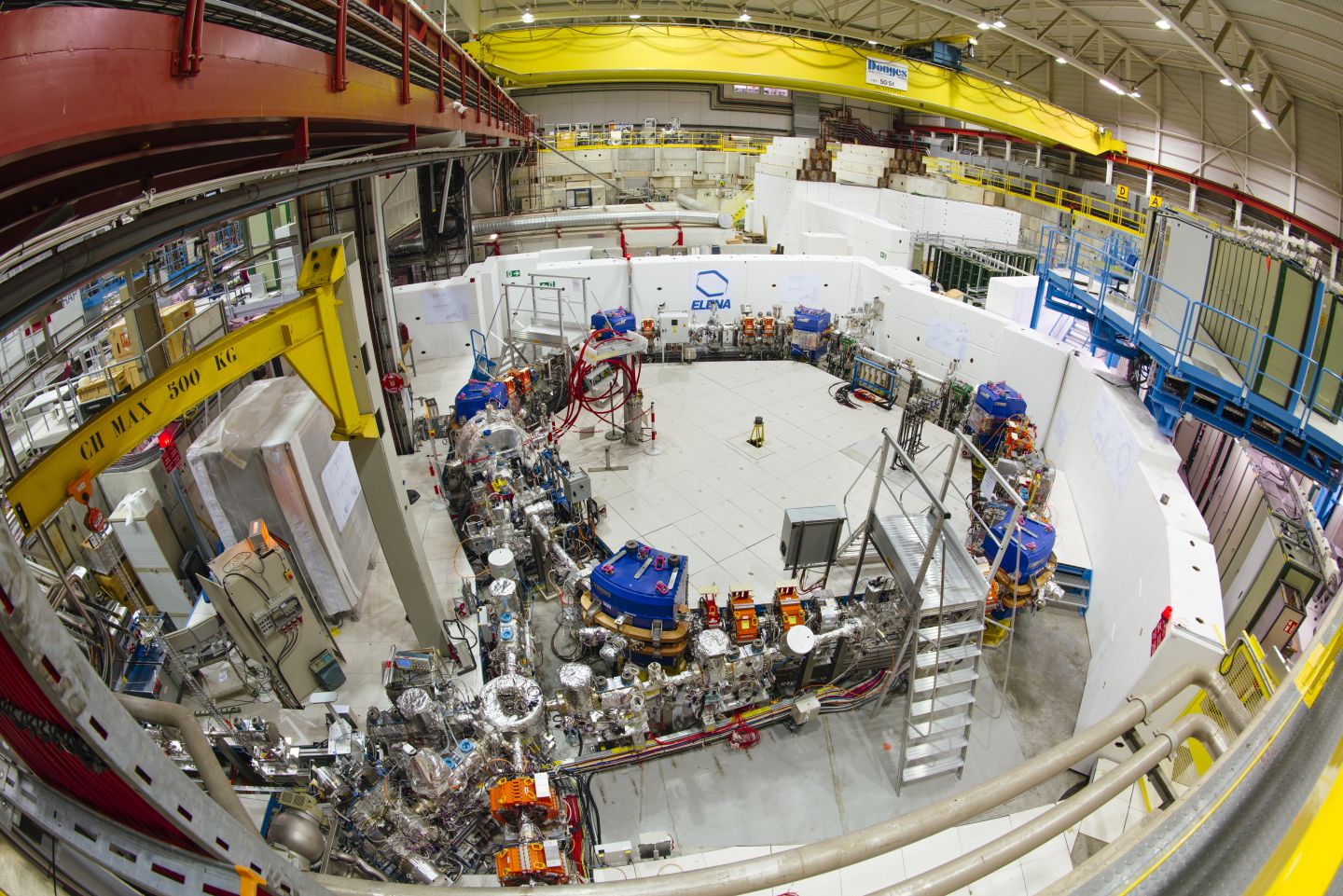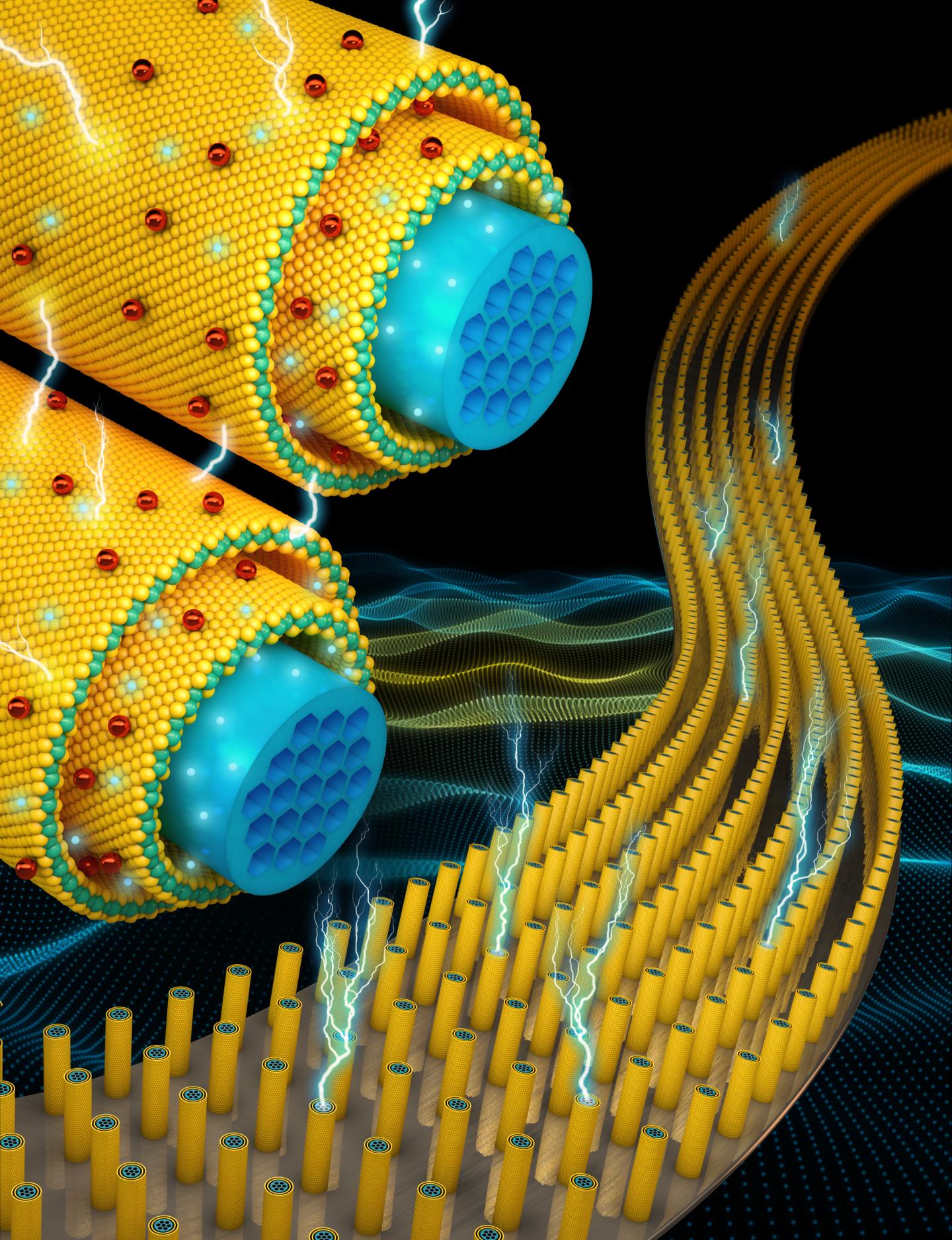On Monday, the Massachusetts Institute of Technology announced its new artificial intelligence. Based on a photograph alone, it can predict what’ll happen next, then generate a one-and-a-half second video clip depicting that possible future.
You could mistake ELENA for a miniature accelerator. But, unlike most accelerators, it’s housed in a hangar and you can take it all in in just a single glance. The biggest difference though, is that it doesn’t accelerate particles, but decelerates them.
CERN’s brand-new machine measures just 30 metres in circumference and has just begun its first tests with beam.
The ELENA (Extra Low ENergy Antiproton) deceleration ring will be connected to the Antiproton Decelerator (AD), which has been in service since 2000. The AD is a unique facility that enables the study of antimatter.
Illustration representing the novel design of a hybrid supercapacitor, showing bundles of nanowires (blue) coated with 2D energy-storage materials (yellow) (credit: University of Central Florida)
University of Central Florida researchers have developed a radical new supercapacitor design that could one day replace lithium-ion batteries, allowing users to charge a mobile phone in a few seconds and with a charge that lasts a week, according to the researchers. The new battery would be flexible and a fraction of the size of a lithium-ion battery.
The proof-of-concept design is based on a hybrid supercapacitor composed of a core with millions of highly conductive nanowires coated with shells of two-dimensional materials. It combines fast charging and discharging (high power density) and high storage capacity (high energy density).
The pioneering and world-leading research conducted at the University of Exeter’s state-of-the-art Living Systems Institute (LSI) will form the basis of the latest high-profile Global Conversation event.
The iconic new research facility, located on the University’s Streatham Campus, will host 100 specially-invited guests at the prominent event, held on Monday, 28 November.
The event, the first Global Conversation to be held on campus, gives the distinguished guests an exclusive opportunity to preview the new £52 million LSI facility, which brings together world-leading scientists and researchers from diverse discipline backgrounds.
BMI implant leveraging AI.
You probably clicked on this article because the idea of using brain implants to allow artificial intelligence (AI) to read your brain sounds futuristic and fascinating. It is fascinating, but it’s not as futuristic as you might think. Before we start talking about brain implants and how to augment the human brain using AI, we need to put some context around human intelligence and why we might want to tinker with it.
We floated the idea before that gene editing techniques could allow us to promote genetic intelligence by performing gene editing at the germline. That’s one approach. As controversial as it might be, some solid scientific research shows that genetics does play a role in intelligence. For those of us who are already alive and well, this sort of intelligence enhancement won’t work. This is where we might look towards augmented intelligence. This sort of augmentation of the brain will firstly be preventative in that it will look to assist those who have age associated brain disorders as an example. In order for augmented intelligence to be feasible though, we need a read/write interface to the human brain. One company called Kernel might be looking to address this with a technology that takes a page out of science fiction.
Summary: Researchers have discovered a link between nerve clusters in the brain and the amount of force generated by a physical action.
Source: Oxford University.
Researchers have found a link between the activity in nerve clusters in the brain and the amount of force generated in a physical action, opening the way for the development of better devices to assist paralysed patients.









